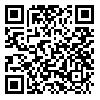Volume 5, Issue 4 (9-2018)
jbrms 2018, 5(4): 41-46 |
Back to browse issues page
Download citation:
BibTeX | RIS | EndNote | Medlars | ProCite | Reference Manager | RefWorks
Send citation to:



BibTeX | RIS | EndNote | Medlars | ProCite | Reference Manager | RefWorks
Send citation to:
Batavani M R, Marandi S M, Ghaedi K, Esfarjani F. Lack of association between insulin-like growth factor-I (IGF-I) gene polymorphism (rs35767) and power performance in professional, amateur athletes and non-athlete individuals in Iranian population. jbrms 2018; 5 (4) :41-46
URL: http://jbrms.medilam.ac.ir/article-1-394-en.html
URL: http://jbrms.medilam.ac.ir/article-1-394-en.html
Department of Physiology, Faculty of Center of Physical Education, Isfahan University of Technology, Isfahan 84156-83111, Iran , batavani@cc.iut.ac.ir
Abstract: (4321 Views)
Introduction: Genetic variation between individuals may include single nucleotide polymorphisms. These individual differences could change human phenotypes (such as skeletal structure, heart and lung size). Insulin-like growth factor-I (IGF-I) is a critical factor in growth and exercise-associated muscle development. In this study we analyzed the frequency of IGF-I rs35767 polymorphism in karate-Kas athletes to find whether there is a difference among professional, amateur athletes and non- Karate-Kas.
Materials and methods: Two hundred and fifty-four athletes (95 professional Karate-Kas, and 159 amateur Karate-Kas) and 159 non-athletic healthy individuals participated in the current study. Following provision of informed consent, 2 mL of blood samples were taken. After DNA isolation, the genotyping frequencies of the IGF-I gene C/T polymorphism was assessed by restriction fragment length polymorphism (RFLP) analysis. Statistical analyses carried out using SPSS software (version 20) and data with P<0.05 were considered to be significant.
Results: Frequency of T/T and C/T genotypes in comparison to C/C genotype was increased in professional Karate-Kas and amateur Karate-Kas versus to control volunteer (odd ratio > 1) however, was not significant. Odd ratios of T/T and T/C genotypes compared to C/C in professional group versus controls were 1.125 (95%CI: 0.556 - 2.275) and 1.034 (0.538 - 1.984), respectively. Also, odd ratio of T/T and T/C in amateur group versus controls were 1.002 (0.535 - 1.876) and 1.256 (0.715 - 2.205), respectively.
Conclusion: The IGF-I gene C/T polymorphism is not significantly associated with the physical performance´s levels of karate-kas athletes in Iranian population.
Materials and methods: Two hundred and fifty-four athletes (95 professional Karate-Kas, and 159 amateur Karate-Kas) and 159 non-athletic healthy individuals participated in the current study. Following provision of informed consent, 2 mL of blood samples were taken. After DNA isolation, the genotyping frequencies of the IGF-I gene C/T polymorphism was assessed by restriction fragment length polymorphism (RFLP) analysis. Statistical analyses carried out using SPSS software (version 20) and data with P<0.05 were considered to be significant.
Results: Frequency of T/T and C/T genotypes in comparison to C/C genotype was increased in professional Karate-Kas and amateur Karate-Kas versus to control volunteer (odd ratio > 1) however, was not significant. Odd ratios of T/T and T/C genotypes compared to C/C in professional group versus controls were 1.125 (95%CI: 0.556 - 2.275) and 1.034 (0.538 - 1.984), respectively. Also, odd ratio of T/T and T/C in amateur group versus controls were 1.002 (0.535 - 1.876) and 1.256 (0.715 - 2.205), respectively.
Conclusion: The IGF-I gene C/T polymorphism is not significantly associated with the physical performance´s levels of karate-kas athletes in Iranian population.
Type of Study: Research |
Subject:
Medical physiology
Received: 2018/08/23 | Accepted: 2018/10/20 | Published: 2018/12/31
Received: 2018/08/23 | Accepted: 2018/10/20 | Published: 2018/12/31
Send email to the article author
| Rights and permissions | |
 |
This work is licensed under a Creative Commons Attribution-NonCommercial 4.0 International License. |






